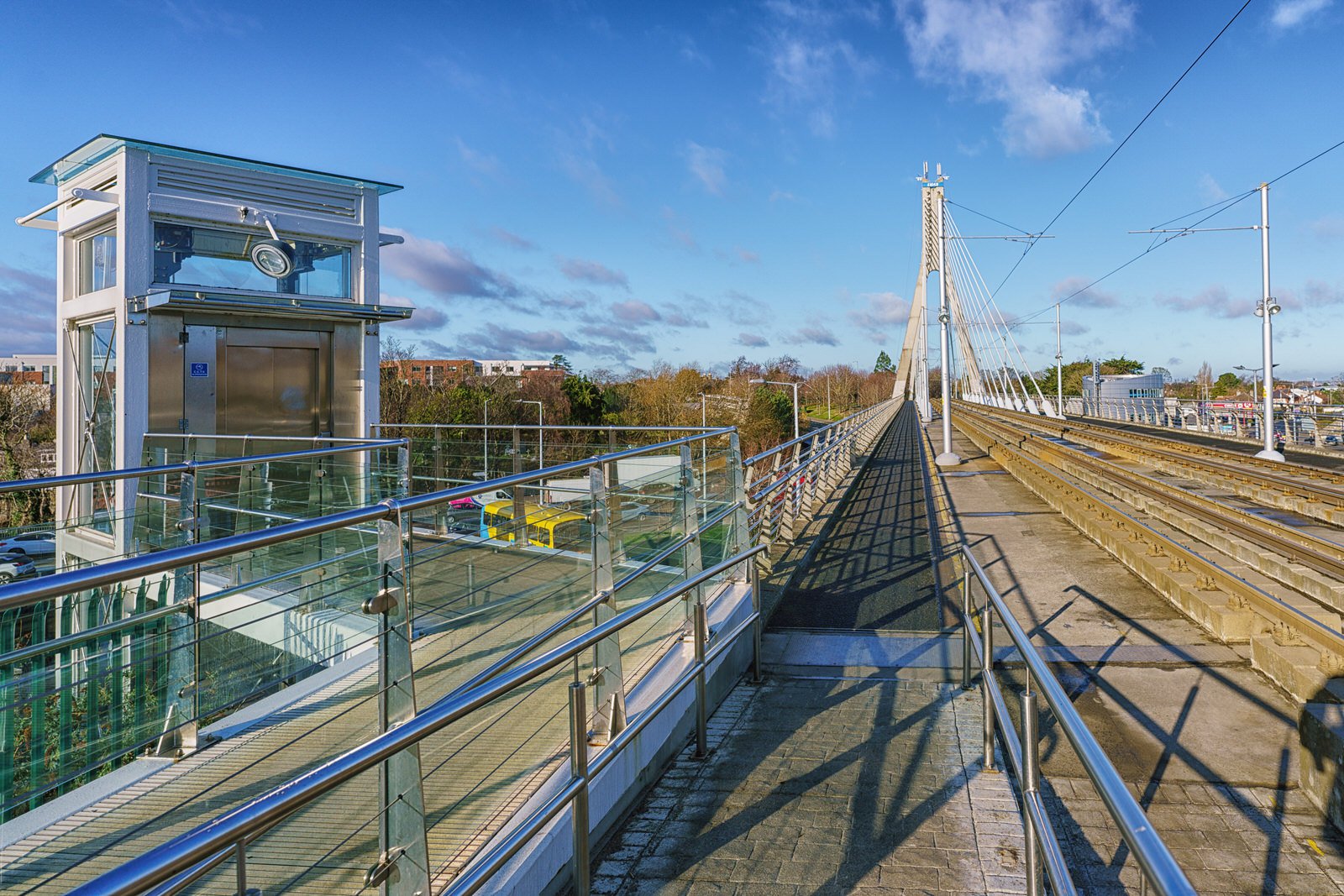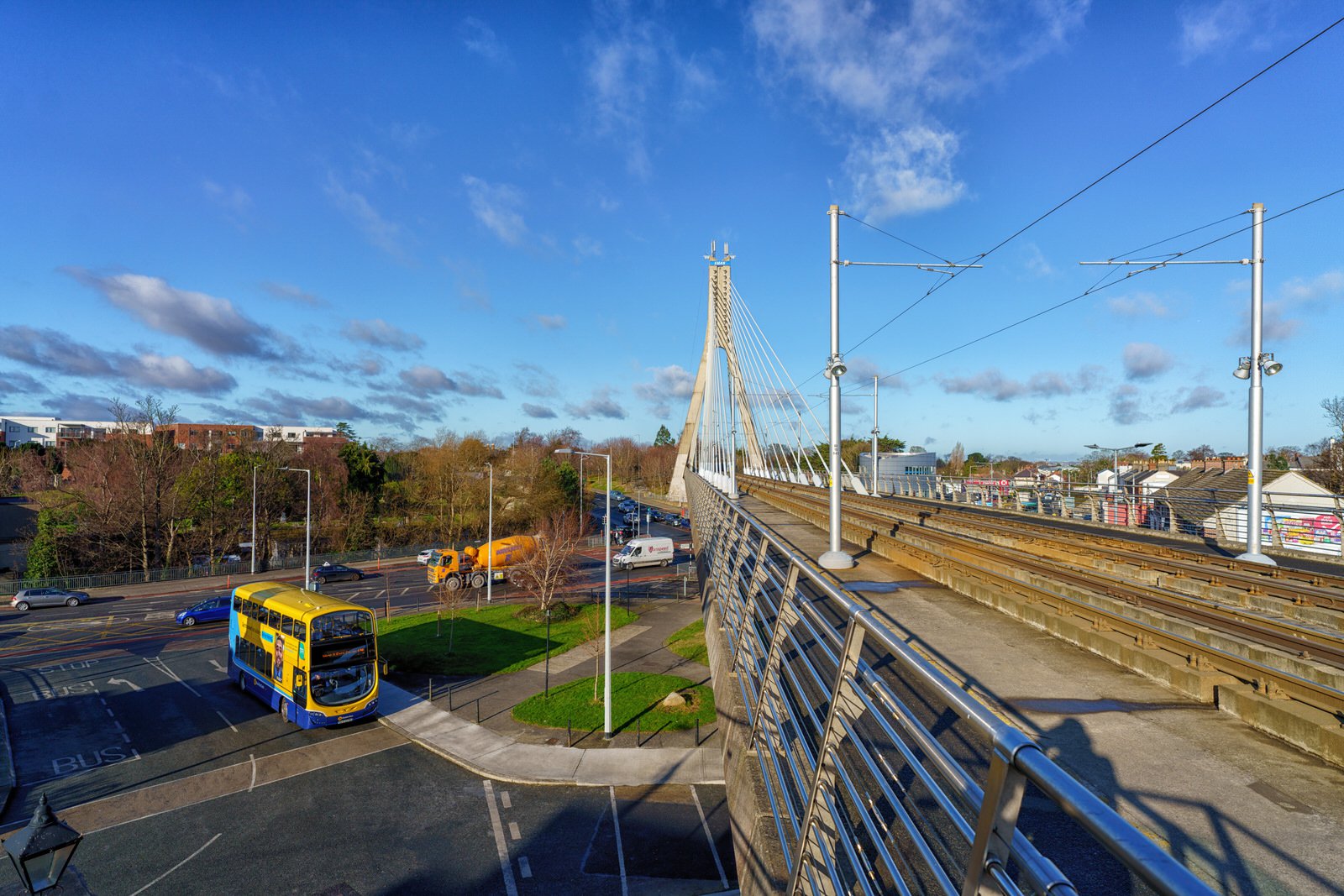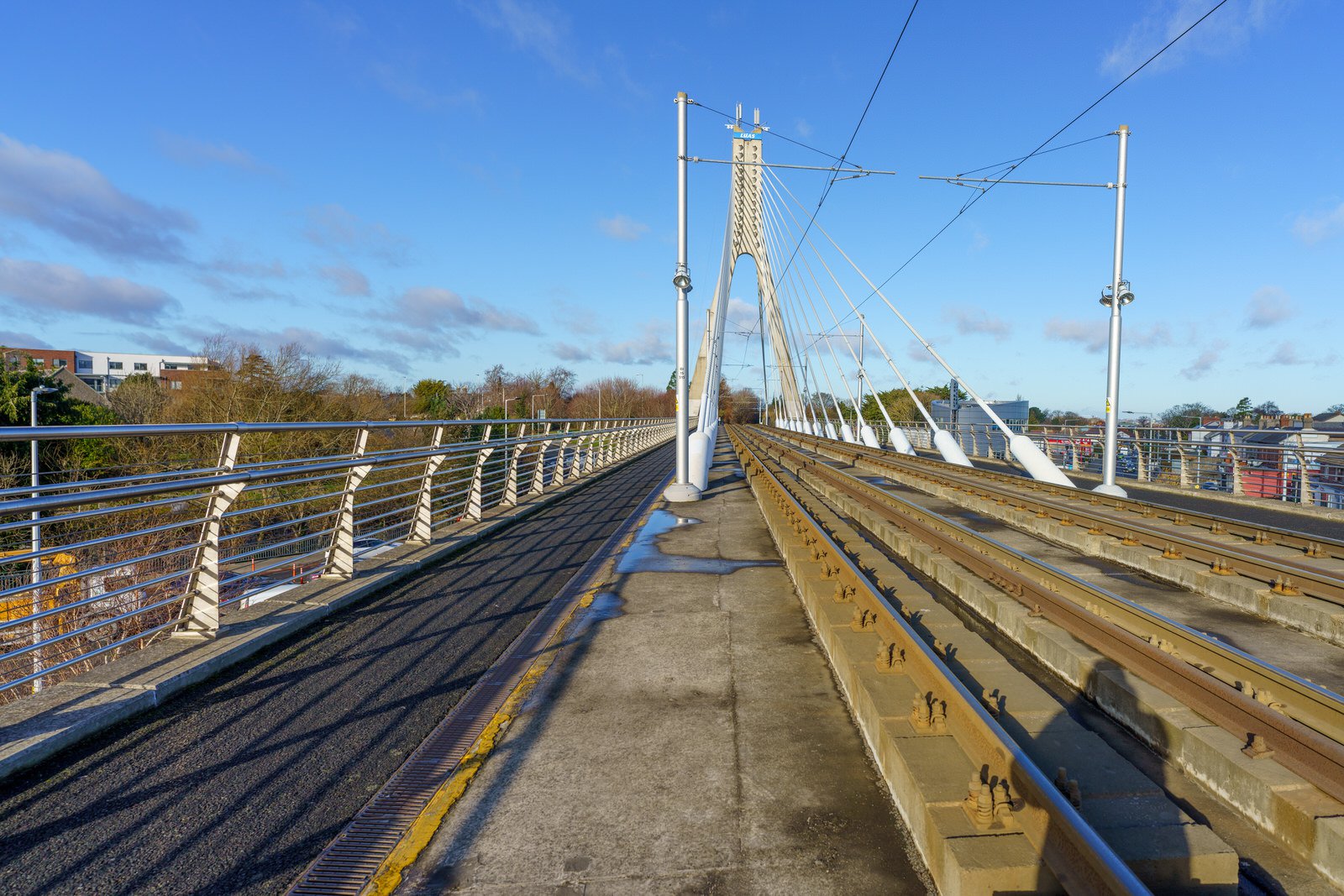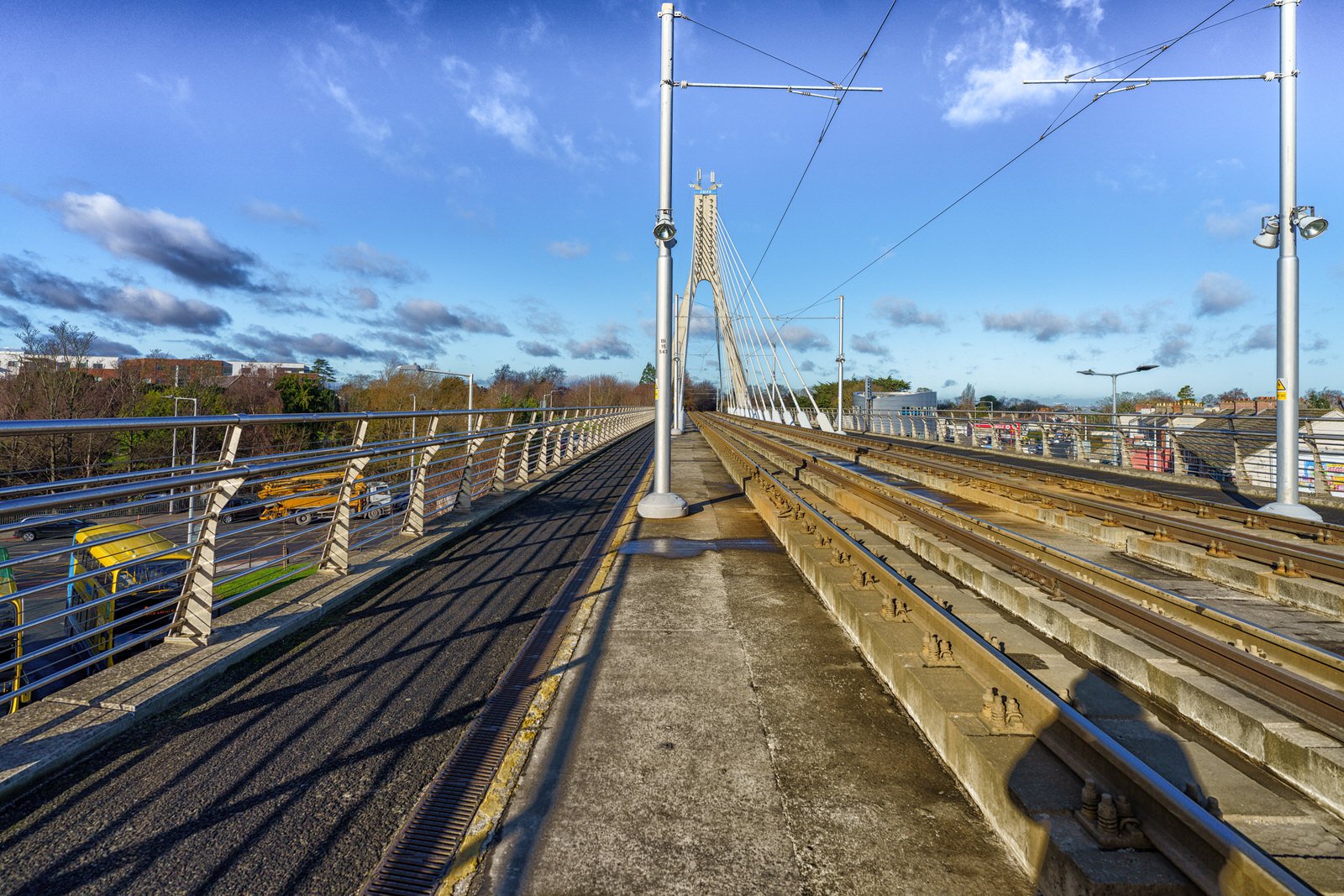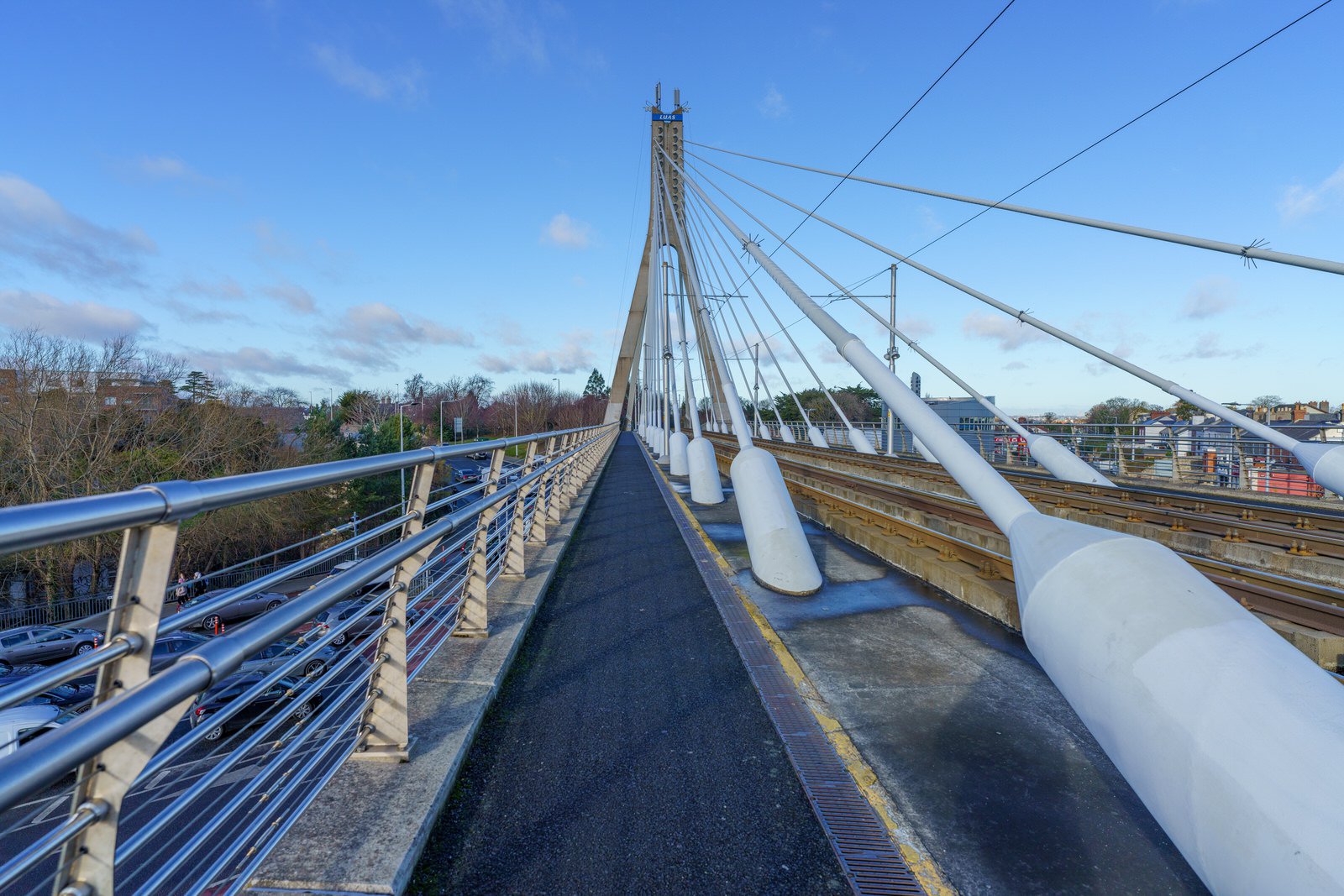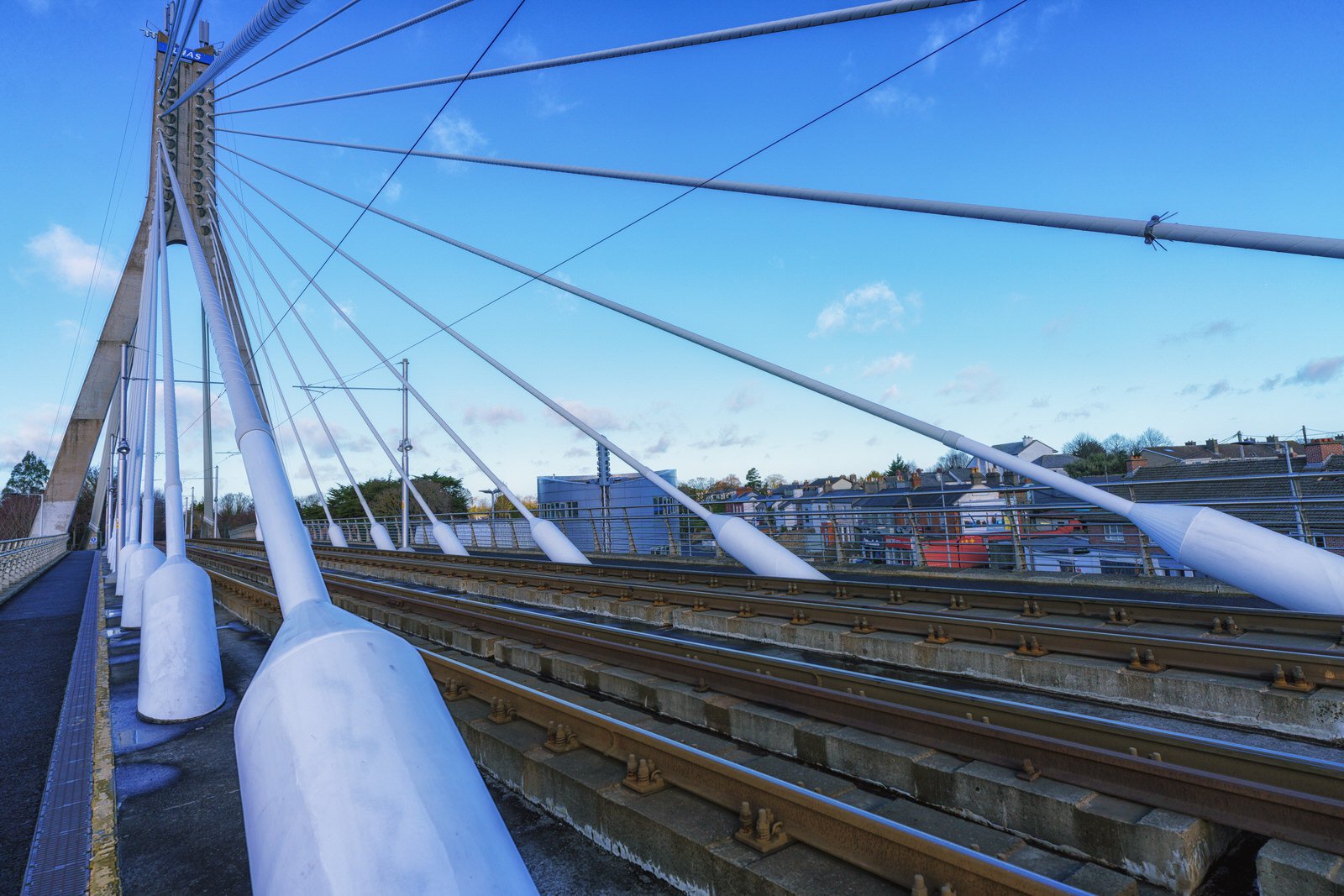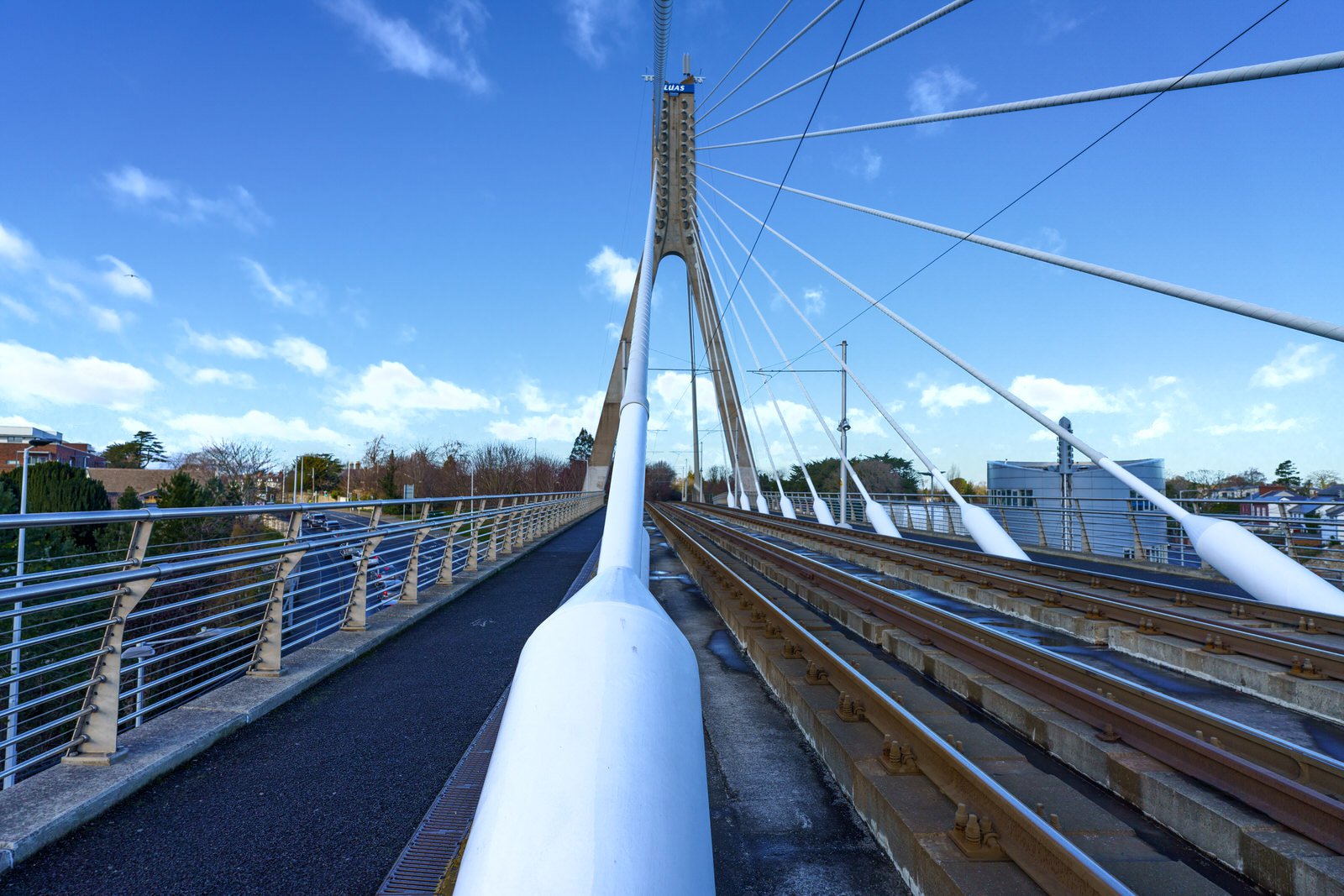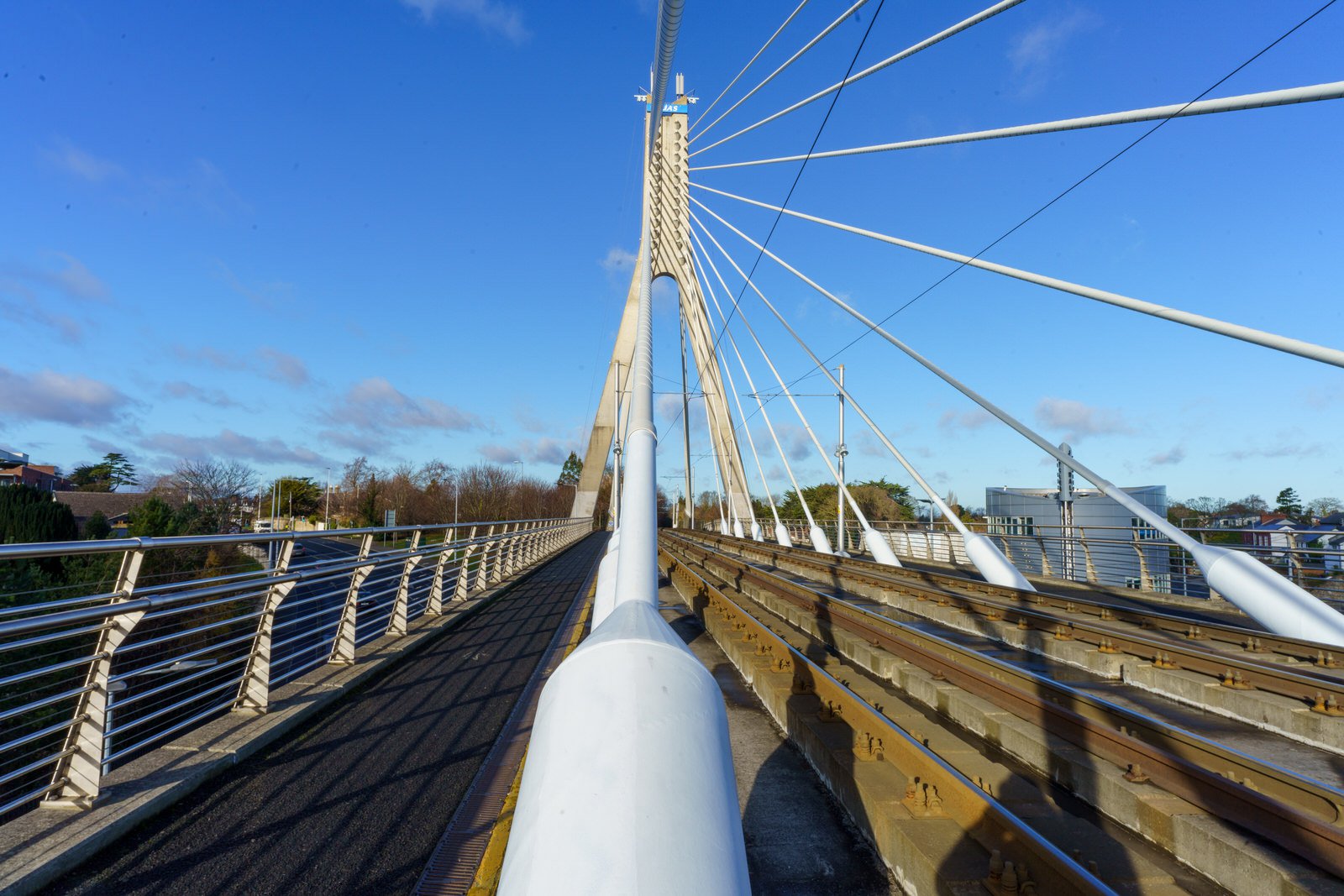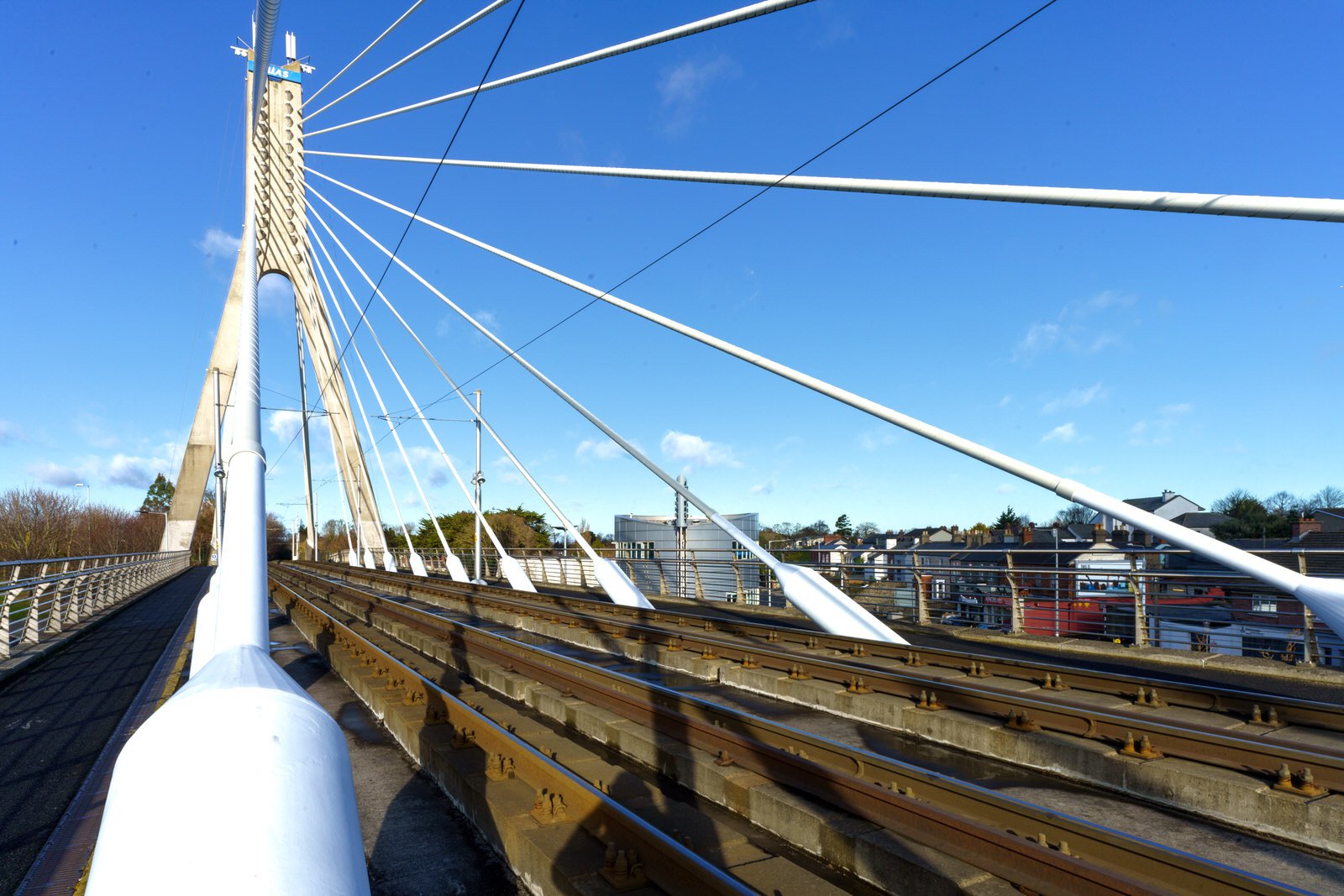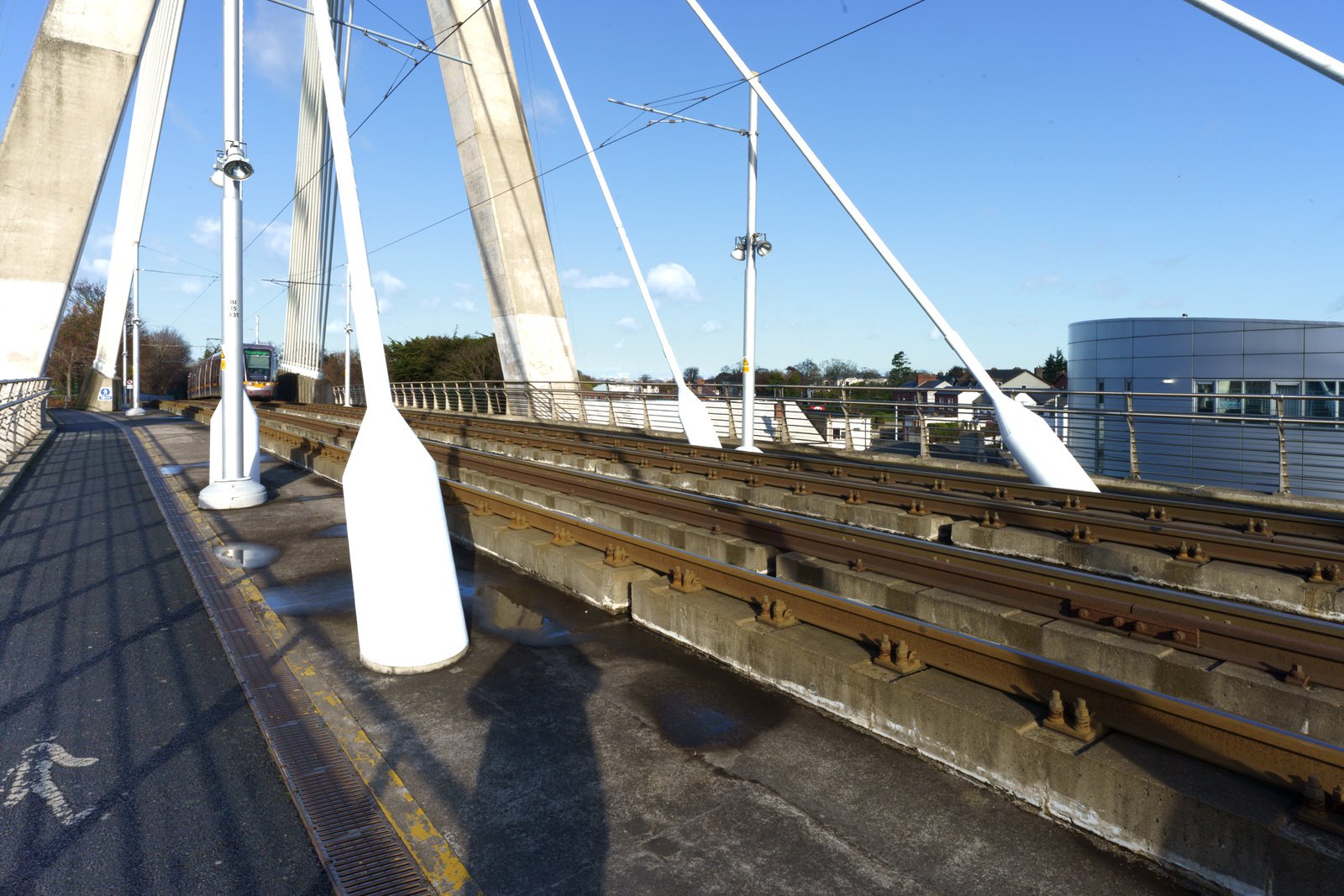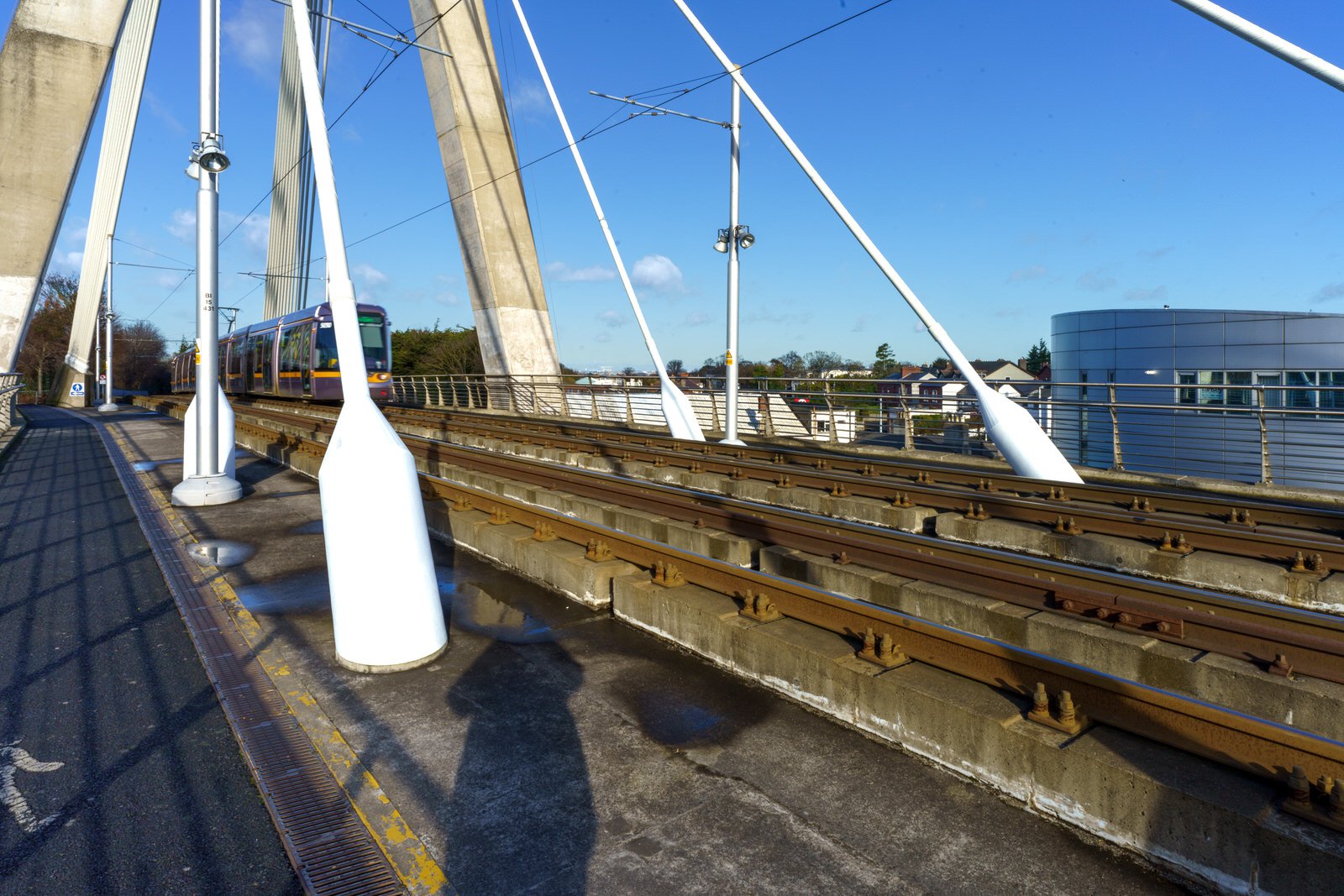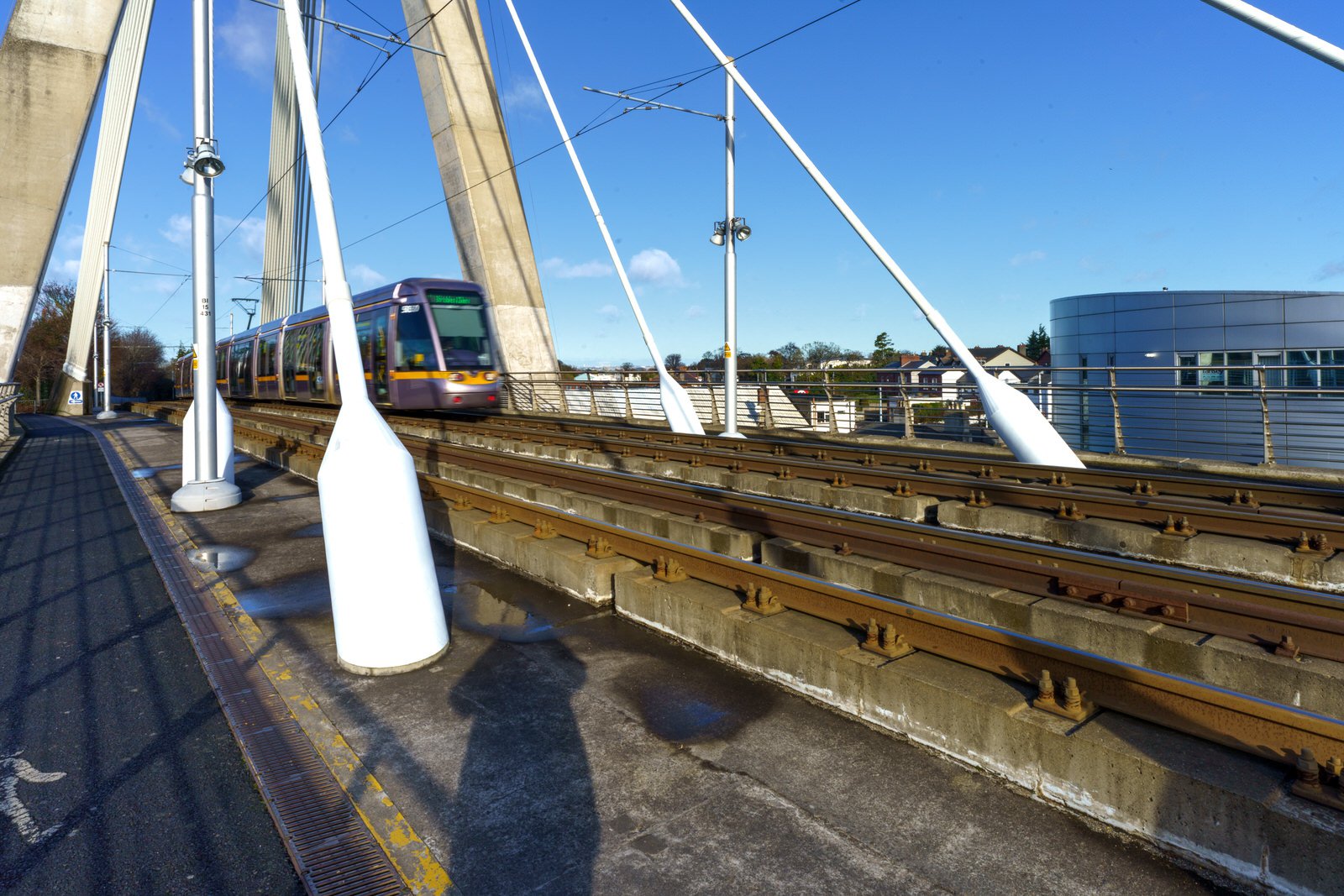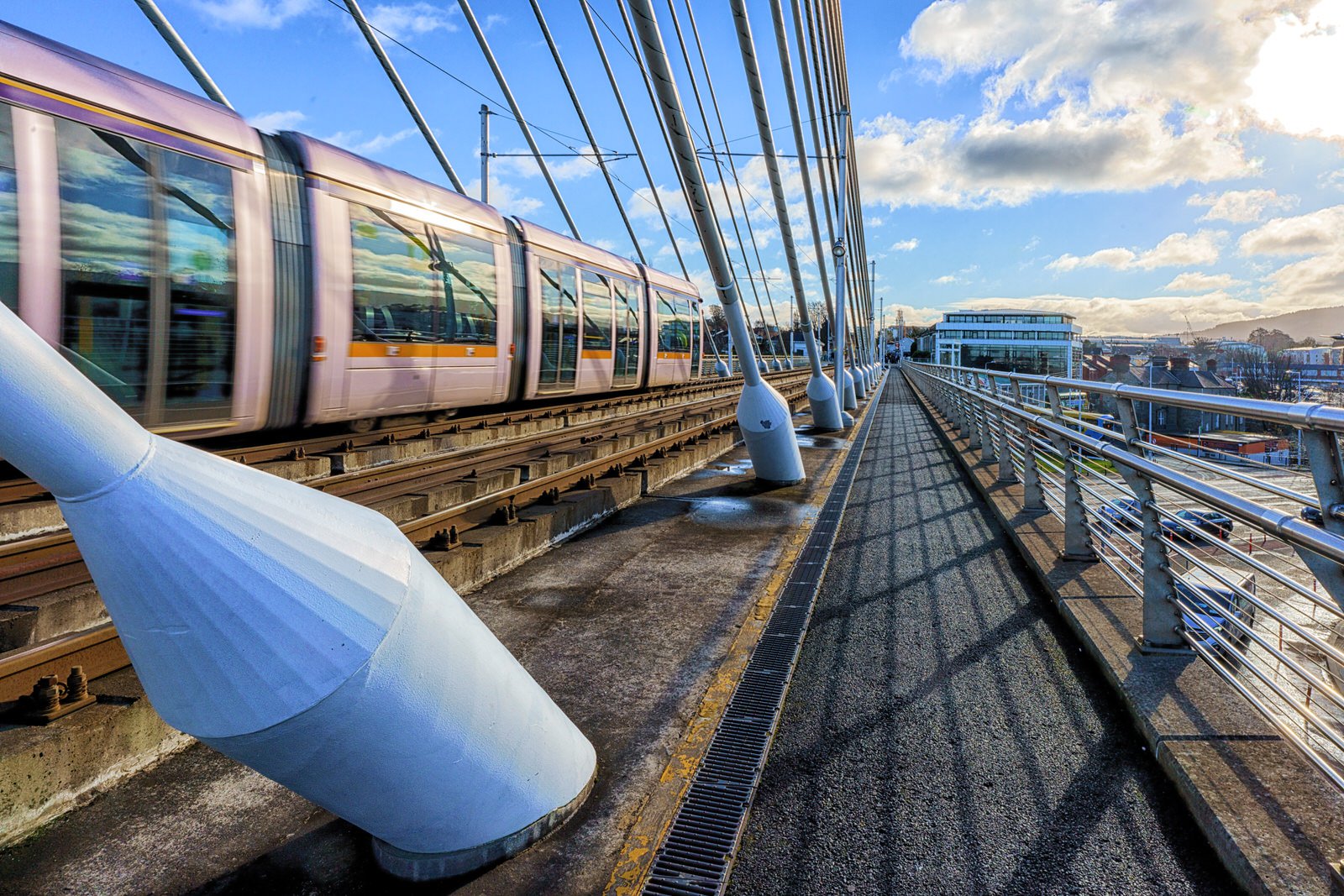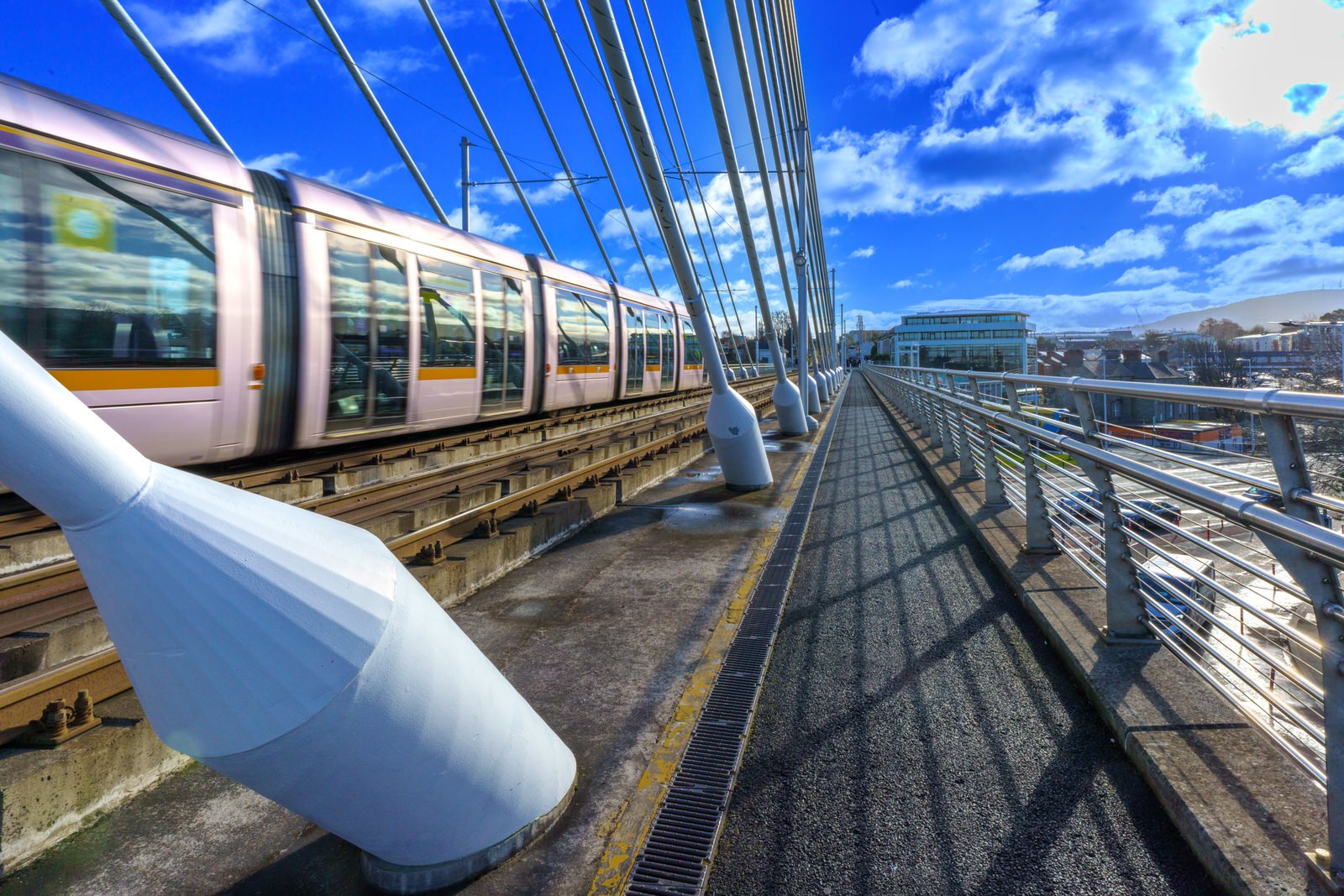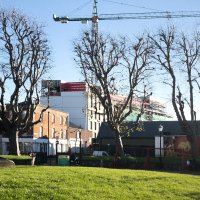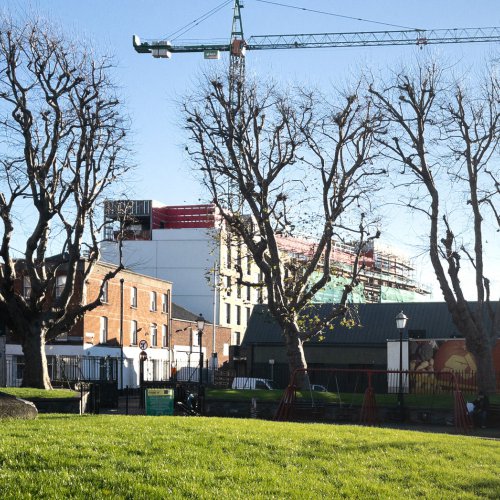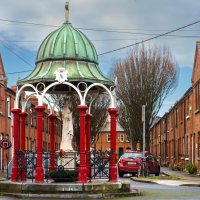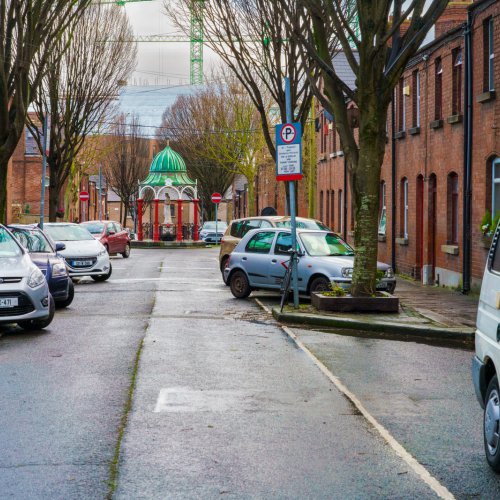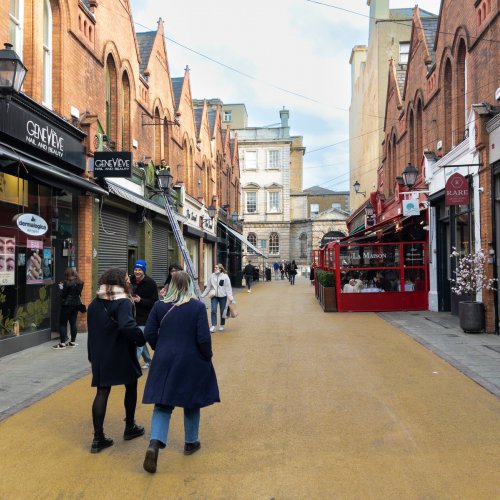The bridge crosses the R112 and R117 regional roads as well as the little-known Slang River.
William Dargan (28 February 1799 – 7 February 1867) was arguably the most important Irish engineer of the 19th century and certainly the most important figure in railway construction. Dargan designed and built Ireland's first railway line from Dublin to Dún Laoghaire in 1833. In total he constructed over 1,300 km (800 miles) of railway to important urban centres of Ireland. He was a member of the Royal Dublin Society and also helped establish the National Gallery of Ireland. He was also responsible for the Great Dublin Exhibition held at Leinster lawn in 1853. His achievements were honoured in 1995, when the Dargan Railway Bridge in Belfast was opened, and again in 2004 when the Dargan Bridge, Dublin a new cable stayed bridge for Dublin's Light Railway Luas were both named after him.
The Royal Dublin Society elected Dargan as a life member in November 1851. After attending the Crystal Palace Exhibition of 1851, William Dargan proposed to the society with an extended exhibition, with an offer of £20, 000 of funding.
As the committee of the 1853 Exhibition believed that this event would be self-financing, mainly relying on Dargan's contribution of £20, 000, it was announced that there would be no cash donations taken. After the building costs had risen by the autumn of 1852, the committee was forced to make a public subscription, but Dargan offered another £6, 000 as patronage. It eventually reached to the point that Dargan personally funded this exhibition with a considerable amount of £88, 000. Dublin Exhibition received many visitors. Although there were only 400 people on the first two days, this number rises to 4, 000 a week later, and to 5, 000 on the following day. The British royal party arrived at Dun Laoghair on 29 August 1853 at the purpose to attend the exhibition, and Queen Victoria personally meets William Dargan.
Prince Albert commented both on Dargan and the Dublin Exhibition, "Mr Dargan is the man of the people. He is a simple, unobtrusive, retiring man, a thorough Irishman, not always quite sober of an evening, industrious, kind to his workmen, but the only man who has by his own determination & courage put a stop to every strike or combination of workmen, of which the Irish are so fond. All he has done has been done on the field of Industry & not of politics or Religion, without the Priest or factious conspiracy, without the promise of distant extraordinary advantages but with immediate apparent benefit. The Exhibition, which must be pronounced to be very successful, has done wonders in this respect. A private undertaking, unaided by Govt, or any Commission with Royal Authority, made and erected at the sole expense of a single Individual, & this an Irish Road contractor, not long ago a common labourer himself, who had raised himself solely by his own industry & energy, - it deserves the greatest credit & is looked upon by the Irish with infinite self-satisfaction as an emblem of national hope".
William Dargan ultimately lost £20,000. At the close of the exhibition the Irish National Gallery on Leinster Lawn, as a monument to Dargan, was erected, with a fine bronze statue of himself in front, looking out upon Merrion Square.

